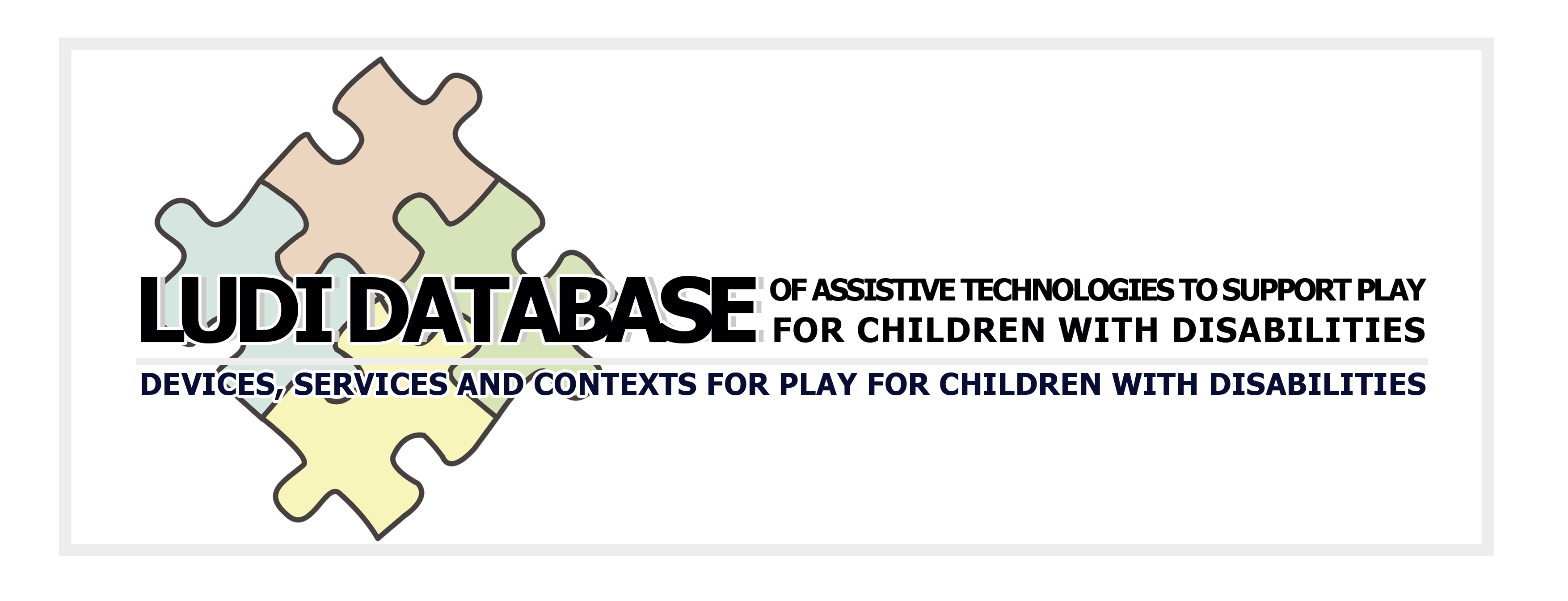Summary
Play Experience by Assistive Technology for play
Devices, services & contexts for play with children with disabilities
Play Experience by Assistive technology
Low-tech, high-tech products, services and contexts for play
Context
Type of Play
Type of play in this play system
LUDI Classification of types of play
Objectives
Participant
Explanation
Explanation on the use of low-tech, high-tech devices, services or contexts
Evaluation
Achievements
Summary of achieved effects
References
References to the intervention or research project
Keywords

